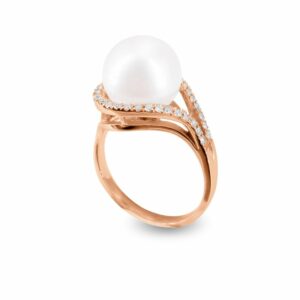In this article, we’ll be exploring the differences between 14k and 18k gold and the key factors to consider when choosing between the two. We’ll cover everything from the composition and color of 14k vs 18k gold to the costs and benefits of each.
What You Need to Know About the Purity of Gold?
When it comes to choosing gold jewelry, one of the main considerations is the purity or fineness of the gold. Gold is typically measured in karats, with 24 karats being the purest form of gold. However, pure gold is too soft and malleable to be used in jewelry, so it is typically mixed with other metals to increase its durability and strength. The most common gold alloys used in jewelry are 14k and 18k gold, which contain 58.5% and 75% gold, respectively.
Composition and Color: 14k vs 18k Gold
One of the main differences between 14k and 18k gold is their composition and color. 14k gold is made up of 58.5% gold and 41.5% other metals, while 18k gold is made up of 75% gold and 25% other metals. This means that 18k gold is purer and contains a higher percentage of gold than 14k gold. As a result, 18k gold is softer and more pliable than 14k gold, making it more prone to scratches and dents.
Costs and Durability: 14k vs 18k Gold
Another key factor to consider when choosing between 14k and 18k gold is the cost and durability of each. Because 18k gold contains a higher percentage of gold, it is generally more expensive than 14k gold. However, the higher cost of 18k gold may be worth it for those who prioritize the purity and softness of the gold. On the other hand, 14k gold is more durable and resistant to wear and tear due to its lower gold content and higher percentage of other metals.
14k Gold Manufacturers and Industry Standards
14k gold is the most common gold alloy used in jewelry, and is the industry standard for gold jewelry in the United States. Many 14k gold manufacturers use a specific alloy formula that combines gold with other metals such as copper, zinc, and nickel to create a strong and durable gold alloy. The specific alloy formula can vary from manufacturer to manufacturer, so it’s important to do your research and choose a reputable and trustworthy brand.
The Benefits of 14k and 18k Gold
Both options have their own unique benefits, and the right choice for you will depend on your personal preferences and priorities. If you’re looking for a balance of purity and durability, 14k gold may be the better option. It’s a versatile and cost-effective choice that can be worn on a daily basis without fear of scratching or tarnishing. On the other hand, if you’re looking for the purest and most luxurious form of gold, 18k gold may be the way to go. It’s softer and more pliable, making it perfect for intricate and delicate designs.
Choosing Between 14k and 18k Gold
Ultimately, the choice between 14k and 18k gold comes down to your personal preferences and budget. Consider factors such as the composition and color of the gold, the costs and durability of each, and your own personal style and needs. It’s also important to keep in mind that gold jewelry should be cared for and maintained properly to ensure it stays in good condition and retains its value. This includes regular cleaning, storage, and professional servicing as needed.
Conclusion
In conclusion, 14k and 18k gold are the two most common gold alloys used in jewelry, and each has its own unique characteristics and benefits. 14k gold is a more durable and cost-effective choice, while 18k gold is purer and softer. When choosing between the two, consider factors such as the composition and color of the gold, the costs and durability of each, and your personal preferences and budget. With a little bit of research and consideration, you can find the perfect gold alloy to suit your needs and style.



